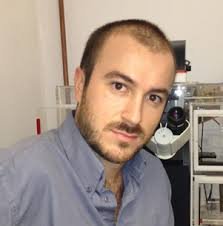
This project is co-funded by three members of the Duchenne Forum – Muscular Dystrophy UK, Duchenne Children’s Trust and The Duchenne Research Fund. The Duchenne Forum is a group of charities working together to accelerate progress in the search for treatments and eventually cures for Duchenne muscular dystrophy.
Within the first seven months of this project we have taken skin cells from one individual affected by Duchenne muscular dystrophy and turned them into iPS cells. We did this using a technique that does not lead to mutations in our DNA, thus preventing transformation of the stem cells into cancerous cells. This allows us to generate cells with high levels of safety for future transplantation studies.
We also analysed the biological properties of a previously established Duchenne muscular dystrophy iPS cell line. We further corrected the genetic defect in this cell line using a vector able to reintroduce the correct dystrophin gene, which is lacking in people with Duchenne muscular dystrophy. We then differentiated these cells into muscle-making cells that have shown to be stable.
Our future work for the coming year will be:
- to generate additional iPS cell lines from different Duchenne muscular dystrophy patients (having many stem cell lines from different individuals allows us to see how different patient stem cells behave when transplanted into a model of Duchenne muscular dystrophy and understand the overall efficiency of this approach)
- to further characterise the new stem cell lines and differentiate them into muscle-making cells able to generate skeletal muscle (this will be a critical step to show that the stem cells we have made can become fully functional muscle)
- to correct the cell lines by introducing a vector called Human Artificial Chromosome containing the entire dystrophin gene. These cells will be further analysed to check their stability and safety.
What are the researchers aiming to do in this project?
The aim of this PhD studentship is to test the feasibility of a novel cell therapy that could be used to restore dystrophin production in boys with Duchenne muscular dystrophy. The researchers will take skin cells from boys with Duchenne muscular dystrophy and genetically re-programme them to become a type of stem cell called induced pluripotent stem (iPS) cells, which can develop into any cell or tissue type, including muscle.
The mutated dystrophin gene in the iPS cells will be repaired by inserting a human artificial chromosome (HAC) containing a functional copy of the dystrophin gene and the cells will be grown in the laboratory and developed into a type of cell known to develop into muscle cells. These cells will be injected into mdx mice – an animal model of Duchenne muscular dystrophy – where researchers believe they will develop into healthy human muscle cells that will repair the muscle damage in the mouse model.
These tests will allow researchers to investigate the potential effectiveness and safety of this therapeutic approach. The development of the stem cells must be carefully controlled to stop cells developing into the wrong type of cell or growing uncontrollably and the researchers will use the mouse model to better understand these challenges.

How will the outcomes of the research benefit patients?
This project will be an important step in the development of a potential approach using combined cell and gene therapy for boys with Duchenne muscular dystrophy. If this therapeutic approach was successful it could address one of the key challenges of stem cell biology: If a patient could one day be treated using their own, repaired, stem cells then the risk of the stem cells being killed by the immune system (as would happen to donor stem cells) would be much reduced.
However, this work is at an early stage – performing initial studies of effectiveness and safety in a mouse model – so it would be some time before it could be tested in clinical trials.
Grant information
Project leader: Dr Savario Tedesco
Location: University College, London
Conditions: Duchenne muscular dystrophy, Becker muscular dystrophy
Duration: four years, starting 2014
Total project cost: £114,326
Official title: Towards a genomic integration-free, iPS cell- and human artificial chromosome based therapy for Duchenne muscular dystrophy
Further information and links
Download a summary of this research project
Learn more about Duchenne muscular dystrophy and Becker muscular dystrophy
Read about other Duchenne muscular dystrophy research projects we funding
Read the latest research news for Duchenne muscular dystrophy

It is only through your contributions that we can continue to fund the vital work that takes us closer to finding treatments and cures for muscle disease. Donate now and help change the lives of thousands of people living with muscle disease. Thank-you for your support.
